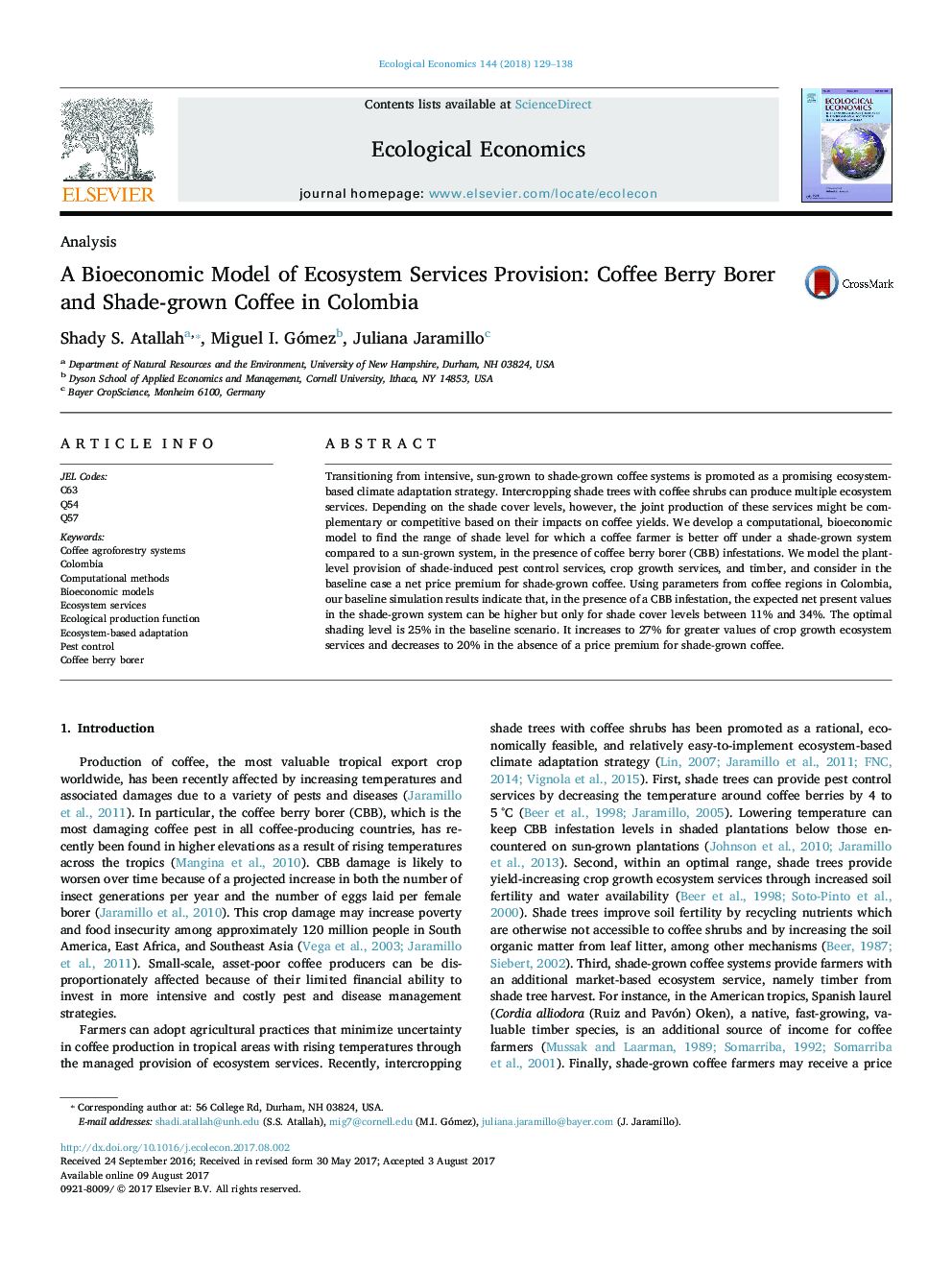| Article ID | Journal | Published Year | Pages | File Type |
|---|---|---|---|---|
| 5048511 | Ecological Economics | 2018 | 10 Pages |
â¢We examine the shade cover range for which a coffee farmer is better off under a shade-grown system vs. a sun-grown system.â¢We develop a bioeconomic model that includes shade-induced pest control services, crop growth services, and timber.â¢The expected net present values in the shade-grown system can be higher but only for shade cover levels between 11% and 34%.â¢The optimal shading level is 25% in the baseline scenario.
Transitioning from intensive, sun-grown to shade-grown coffee systems is promoted as a promising ecosystem-based climate adaptation strategy. Intercropping shade trees with coffee shrubs can produce multiple ecosystem services. Depending on the shade cover levels, however, the joint production of these services might be complementary or competitive based on their impacts on coffee yields. We develop a computational, bioeconomic model to find the range of shade level for which a coffee farmer is better off under a shade-grown system compared to a sun-grown system, in the presence of coffee berry borer (CBB) infestations. We model the plant-level provision of shade-induced pest control services, crop growth services, and timber, and consider in the baseline case a net price premium for shade-grown coffee. Using parameters from coffee regions in Colombia, our baseline simulation results indicate that, in the presence of a CBB infestation, the expected net present values in the shade-grown system can be higher but only for shade cover levels between 11% and 34%. The optimal shading level is 25% in the baseline scenario. It increases to 27% for greater values of crop growth ecosystem services and decreases to 20% in the absence of a price premium for shade-grown coffee.
